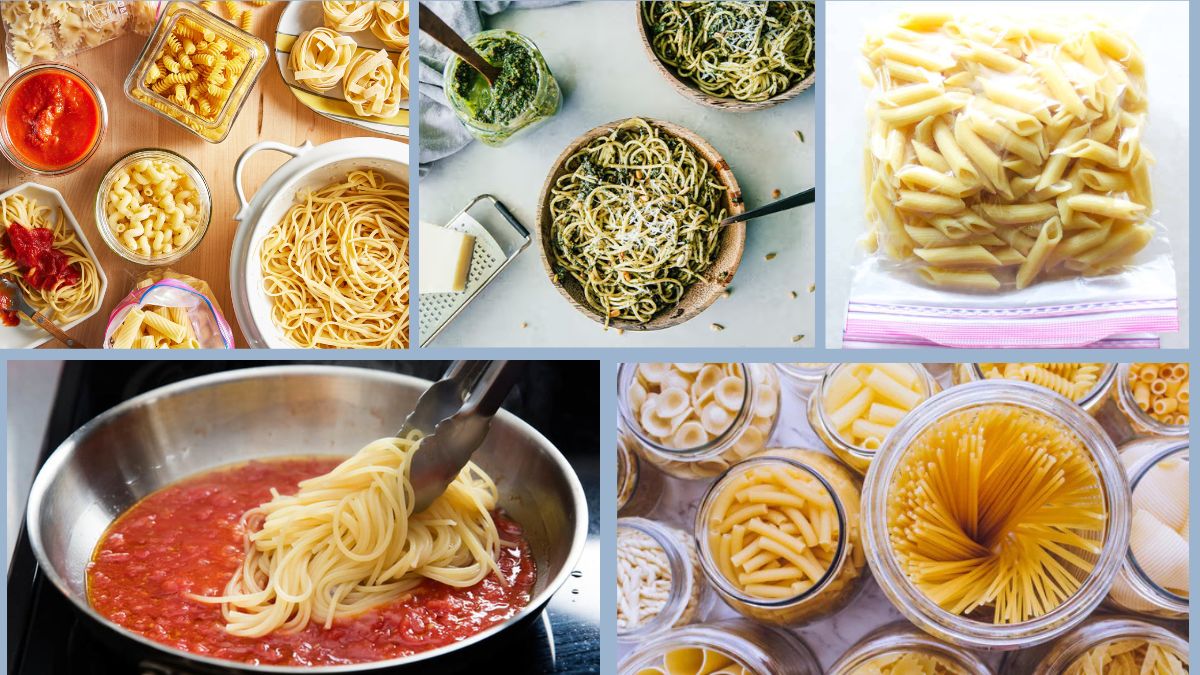Cooked pasta dishes are delicious, convenient, and versatile—whether it’s a creamy plant-based Alfredo, a veggie-loaded marinara, or a zesty pesto spaghetti. However, improper storage can quickly turn a tasty meal into a health hazard. Storing pasta safely ensures that your food retains its flavor, texture, and most importantly, remains safe to eat.
This comprehensive guide explains how to store cooked pasta dishes—including those with sauces or mixed vegetables—without any non-vegetarian ingredients. You’ll learn how to refrigerate, freeze, and reheat pasta like a pro while reducing food waste and preserving quality.
Why Safe Pasta Storage Matters
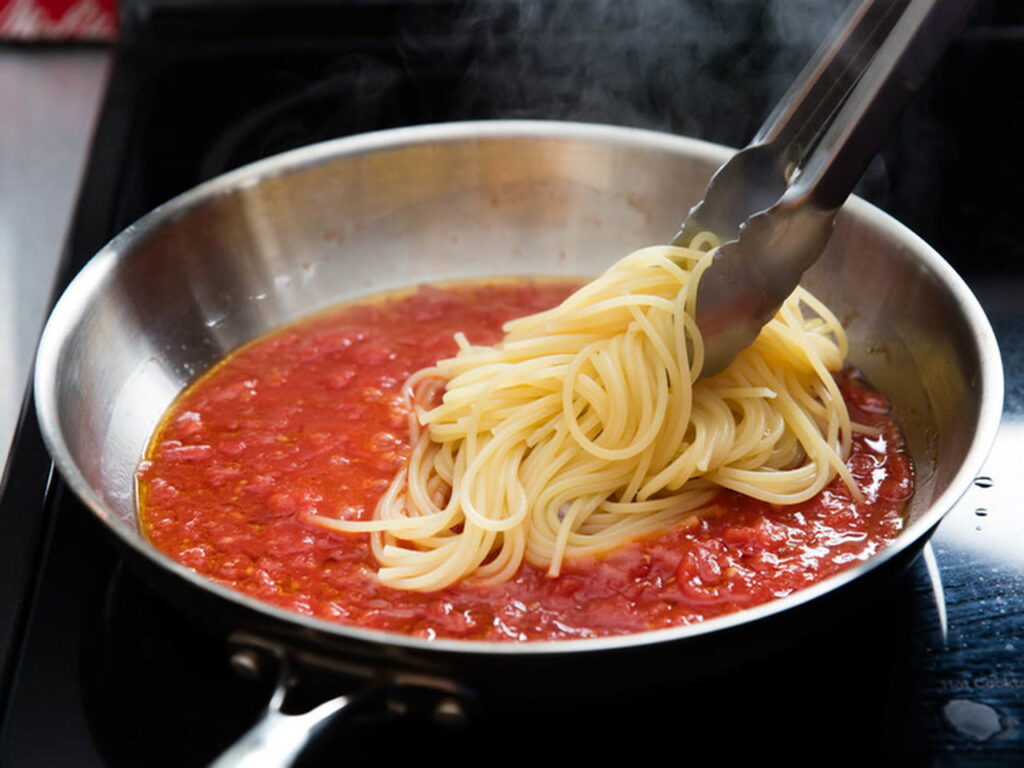
Pasta contains moisture and carbohydrates, making it the perfect environment for bacteria and mold if not handled properly. Some of the common risks associated with poorly stored pasta include:
- Growth of harmful bacteria (like Bacillus cereus)
- Sour or spoiled odor
- Dry, mushy, or rubbery texture
- Loss of flavor and nutrients
Whether you’ve cooked a batch of vegan mac and cheese or made a big tray of baked ziti with plant-based cheese, knowing how to store it correctly will help you enjoy it for days to come.
Step-by-Step: How to Store Cooked Pasta Dishes Safely
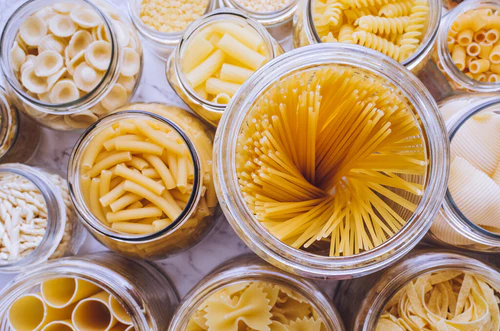
1. Cool Before Storing
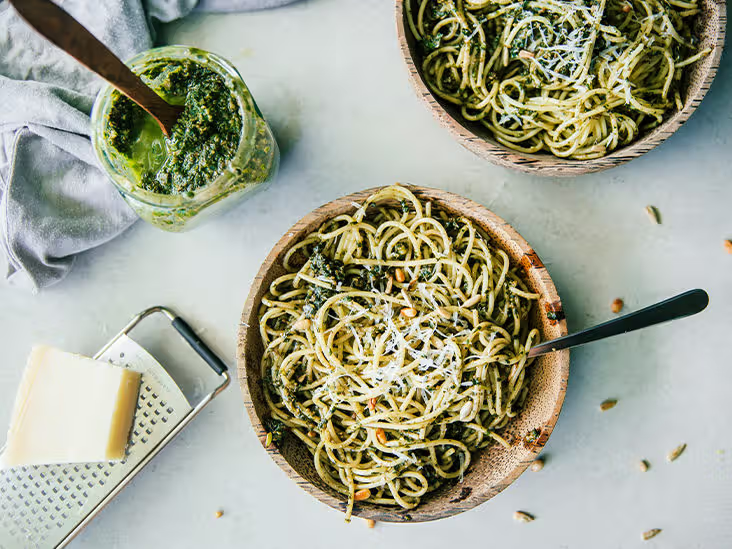
Never store hot pasta directly in the refrigerator or freezer. Hot food raises the temperature inside your fridge and risks contaminating other items.
Best cooling practices:
- Let the pasta cool to room temperature within 2 hours
- Spread the pasta in a shallow pan to allow heat to escape quickly
- Stir occasionally to release steam
- Avoid leaving pasta out for extended periods to prevent bacterial growth
2. Choose the Right Storage Containers
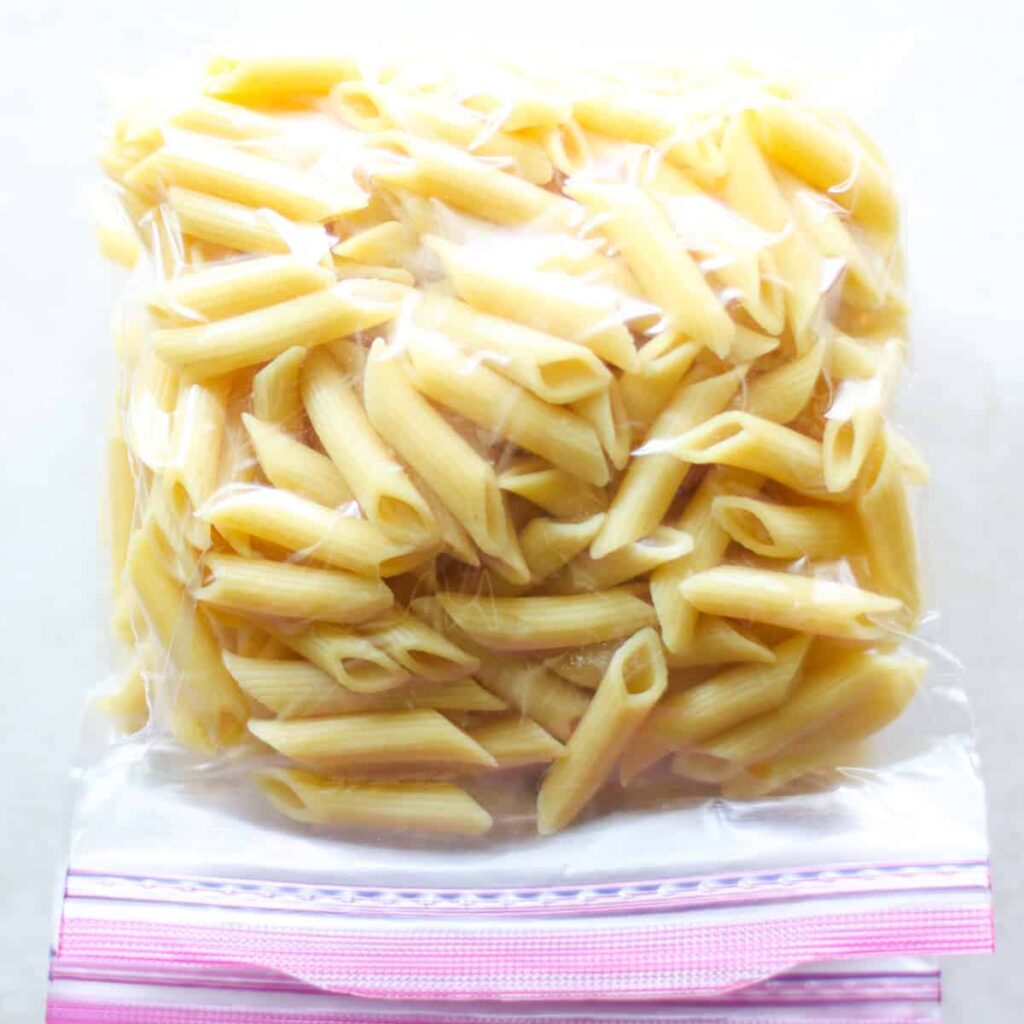
Your container matters just as much as your timing. Use:
- Glass containers with airtight lids – great for preventing odor transfer and safe for reheating
- BPA-free plastic containers – lightweight and freezer-safe
- Silicone food bags or containers – reusable, space-saving, and eco-friendly
- Mason jars – excellent for single servings of pasta or layered pasta salads
Avoid aluminum foil or cling wrap alone, as they do not provide airtight seals and can result in dried-out pasta.
3. Label and Date Everything
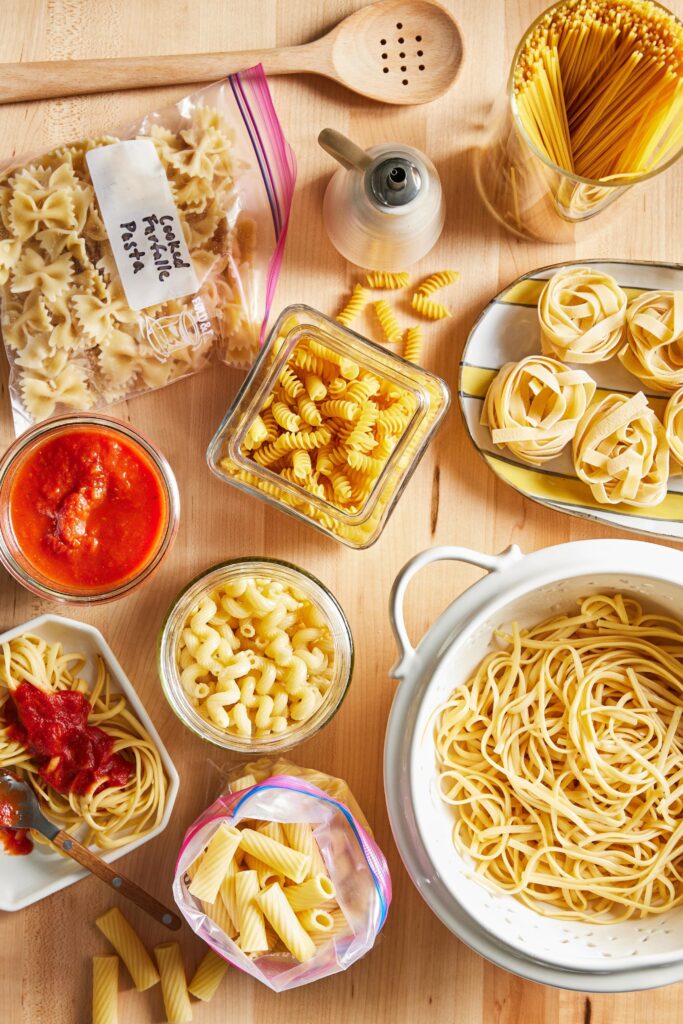
Always label containers with:
- Name of the pasta dish
- Date it was cooked
- Freeze-by date (if applicable)
This helps you prioritize what to eat first and keeps track of how long it’s been stored.
Refrigerator Storage (Good for 3–5 Days)
Cooked pasta dishes, when stored properly in the fridge, should be consumed within 3 to 5 days. This includes:
- Pasta with tomato or marinara sauce
- Plant-based cream sauces (cashew alfredo, vegan carbonara)
- Oil-based pastas (garlic and olive oil spaghetti, pesto pasta)
- Baked pasta dishes (lasagna, ziti, mac & cheese)
Tips:
- Store sauce-coated pasta and plain pasta separately when possible to preserve texture
- Use glass containers to prevent absorption of flavors
- Avoid overcrowding your fridge; allow for air circulation
Freezer Storage (Good for Up to 2–3 Months)
Freezing cooked pasta is a great way to extend its shelf life while retaining its flavor and nutritional value.
How to Freeze Pasta Dishes:
- Let the pasta cool completely
- Portion into meal-sized containers or bags
- Use freezer-safe, airtight containers
- Flatten containers or bags to save space and promote even freezing
- Label with the name and date
Freezer-Friendly Plant-Based Pasta Ideas:
- Vegan lasagna (freeze in pre-cut portions)
- Macaroni with cashew cheese sauce
- Spaghetti with tomato-basil sauce
- Whole wheat penne with sautéed veggies
- Pesto pasta (avoid freezing with nuts or cheese substitutes—add fresh when reheating)
How to Reheat Stored Pasta Dishes Safely
Proper reheating is essential to ensure your pasta is both safe to eat and still tasty. Here’s how to reheat pasta dishes from the fridge or freezer.
From the Fridge
Microwave (Quick Option)
- Place pasta in a microwave-safe dish
- Add a splash of water or plant-based milk (for creamy sauces)
- Cover with a vented lid or damp paper towel
- Heat on medium-high for 1–3 minutes, stirring halfway through
Stovetop
- Add pasta to a non-stick skillet or saucepan
- Add a few tablespoons of water or sauce
- Heat over medium heat, stirring frequently until hot
Oven (Best for Baked Dishes)
- Preheat oven to 350°F (175°C)
- Place pasta in an oven-safe dish and cover with foil
- Bake for 15–20 minutes or until heated through
From the Freezer
To Reheat Frozen Pasta:
- Thaw overnight in the refrigerator for best texture
- Microwave directly from frozen if needed—add moisture and stir frequently
- Reheat in the oven covered with foil to prevent drying out
Note: Cream-based vegan sauces (e.g., made from cashews or oat milk) may separate slightly after freezing. A quick stir and splash of plant milk will help restore creaminess.
Pasta Storage FAQs
Q: Can I freeze pasta with vegetables mixed in?
A: Yes. Just make sure the vegetables are cooked (not raw) and fully cooled. Some veggies like zucchini or spinach may release water when thawed—store sauces separately if possible.
Q: Can I freeze pasta with plant-based cheese?
A: Absolutely. Most vegan cheeses freeze better than dairy versions. However, coconut oil-based cheeses can change texture. Reheat gently and mix well.
Q: Can I store plain cooked pasta separately from sauce?
A: Yes—and it’s often better that way. Store plain pasta with a drizzle of olive oil to prevent sticking. Add sauce when reheating.
Q: How do I know if pasta has spoiled?
A: Look for:
- Sour or foul smell
- Slimy texture
- Mold on the surface
- Discoloration or dry, hard edges
When in doubt, throw it out.
Smart Pasta Prep & Storage Tips
- Batch cook on Sundays and refrigerate meals for the week
- Portion into single-serving containers to avoid reheating the entire batch
- Keep toppings (fresh herbs, vegan parmesan, seeds) separate to preserve freshness
- Use pasta within 2 days if it’s mixed with sauces containing fresh ingredients like lemon juice or chopped herbs
- Layer baked pasta dishes in freezer-safe pans, cover tightly, and freeze uncooked if prepping ahead
Pasta Storage Mistakes to Avoid
- Storing pasta while still warm—invites bacteria
- Using non-airtight lids—leads to freezer burn or drying out
- Reheating multiple times—always reheat only the portion you plan to eat❌ Keeping pasta too long—past 5 days, it’s best to freeze or discard
- Mixing fresh veggies or raw sauces before freezing—can turn mushy
Pasta Storage Summary Chart
| Dish Type | Fridge (Max) | Freezer (Max) | Reheat Tips |
|---|---|---|---|
| Plain Pasta | 4–5 days | 2 months | Add oil before storing |
| Pasta with Tomato Sauce | 4–5 days | 2–3 months | Reheat with added sauce |
| Creamy Vegan Pasta | 3–4 days | 1–2 months | Stir in plant milk |
| Baked Pasta (Lasagna/Ziti) | 5 days | 3 months | Oven reheat recommended |
| Pasta Salads (no mayo/cream) | 3 days | Not recommended | Best eaten fresh |
Final Thoughts
Storing cooked pasta dishes the right way helps you save time, reduce waste, and enjoy comforting, plant-based meals on demand. Whether it’s a creamy vegan mac, a veggie-packed spaghetti, or a freezer-friendly lasagna, proper storage techniques ensure your dishes stay safe, delicious, and nourishing.
By following the steps above—cooling properly, using the right containers, and reheating smart—you can make your kitchen work for you all week long.
